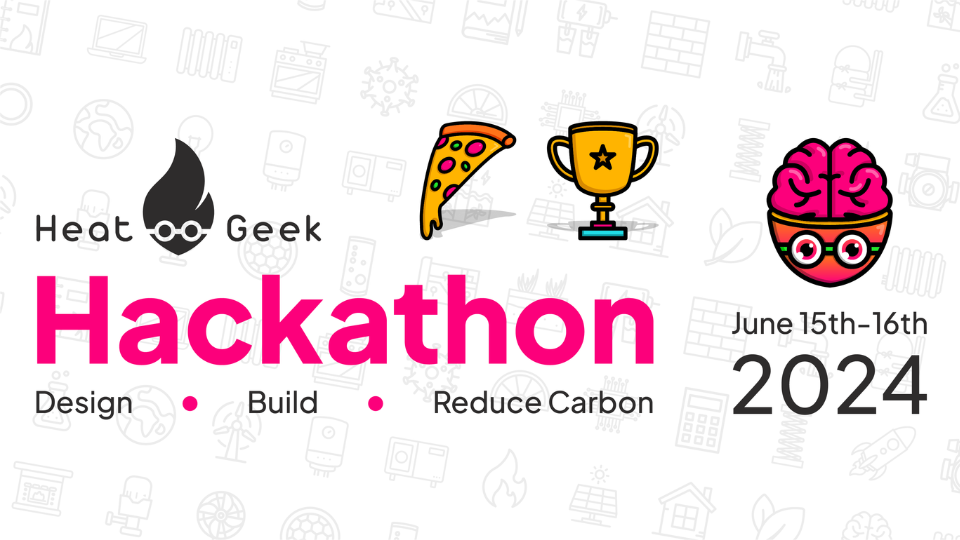
Why the Future Looks Bright for Golang Developers
3rd October, 2023 7 min
Though a relatively new computer programming language, Golang has earned an accomplished reputation among software developers for its simplicity, efficiency, and concurrency. With an increasing number of tech companies choosing to employ Golang developers to build their web applications and cloud services, it is unsurprising that Golang managed to break into the top-10 list of most popular programming languages in 2023.
While there is certainly competition from other newer coding languages like Rust and TypeScript, Golang is likely to remain a go-to option for programmers for many years to come. And given the abundance of Golang developer jobs out there, now is a great time for tech talent to elevate their software development careers by learning this fast-growing, open-source programming language.
In this guide, we’ll explore the growing popularity of Golang, examine its greatest strengths, and delve into the top trends that are shaping the future of the language.
The Growing Popularity of Golang
Golang, also known as Go, was developed by Google engineers Robert Griesemer, Rob Pike, and Ken Thompson back in the late 2000s. Officially released to the public in 2012, this statistically-typed, compiled programming language was designed to provide a simpler, more efficient alternative to traditional languages like C and C++.
Its efficient compilation, strong concurrency support, and speedy execution proved to be popular among programmers who were increasingly limited by shortcomings in existing languages, such as complex syntax, concurrency issues, and poor memory management.
Since its launch, Golang has been adopted by businesses throughout North America, Europe, and Asia, and its impressive growth in popularity shows no sign of abating. A wide range of top tech companies have benefitted from its fast and efficient code, such as Google, Apple, and Facebook.
One of the key reasons for its widespread adoption is that it was largely based on the long-established C language, allowing C developers to upskill fairly seamlessly. Having been hailed as the number one most in-demand programming language across the planet, Golang is expected to remain a mainstay of the software development industry for years to come.
There is another stand-out reason to be optimistic about the outlook for Golang developer jobs; the vibrant and active Go community. With a dedicated group of developers and enthusiasts, the Go community has played a key role in the language’s growth and widespread adoption.
As an open-source language, Golang is designed to encourage contributions from its community, and there are plenty of libraries and tools hosted on GitHub where developers can collaborate on projects. In addition, the Go community regularly hosts conferences and meetups where Golang developers can share their experiences and network with like-minded enthusiasts.

The Strengths of Golang
Whether you are a software developer looking to learn Golang to boost your job prospects, or a company looking for tech talent with Golang expertise, it is important to gain an understanding of why the language is highly valued by developers and tech businesses alike. With almost a fifth of developers having used Golang in the last 12 months, it is clear that there is a growing pool of talent that recognises the various benefits that Golang offers. Let’s take a look at Golang’s top advantages to get a sense of why it has become so admired:
1. Simplicity and Readability
Golang has received widespread praise from programmers for its simplicity and readability. Its minimalist feature set and concise syntax make it an excellent choice for developers looking to hone their coding skills, while experienced programmers with prior knowledge of languages like C and Java will find Go's concepts easy to grasp due to their similarities. In addition, Golang is much easier to deploy and distribute because it can be compiled into a single binary.
The founders of Golang created the language with a ‘one problem, one solution’ philosophy, reflecting their belief that computer programming issues should ideally require just one solution. With its own programming keywords and built-in functions, Golang provides a much more enjoyable coding experience, while its simple code means that it is possible for programmers to learn it with minimal training.
2. Performance and Efficiency
Golang’s exceptional speed and efficiency is perhaps its most important advantage, positioning it as a top choice for developers who focus on crafting high-performance applications. Its rapid compilation, native machine code generation, and minimal memory usage collectively contribute to its speed. With an impressively fast compile time that outcompetes that of Java and C++, it is easy to understand why companies like Google, Twitch, and Uber rely on it for in-house development.
Golang is particularly effective when it comes to building applications like web servers and networked services, where it is able to handle complex requests without sacrificing speed. Its efficient memory management also contributes to its fast performance by reducing the risk of crashes and downtime. So, if you are a company looking for tech talent to create high-quality applications quickly, hiring Golang developers would be a wise move.
3. Concurrency Support
A criticism of traditional programming languages like JavaScript, C++, and Java is that they have poor concurrency support. Many of today’s high-tech applications rely on multiple computations happening simultaneously, and there is a greater demand for programming languages with outstanding concurrency. This is another area where Golang gains an edge over its competitors, as the language was designed with concurrency in mind. With strong concurrency support, Golang developers are able to ensure that their applications have faster execution times.
Golang's approach to concurrency centers around goroutines, which are lightweight threads that can be created and managed with ease. Goroutines are capable of seamlessly communicating seamlessly through channels, facilitating large amounts of data exchange between them. This simplicity empowers developers to create concurrent applications that are both efficient and easy to understand.

Top Trends Shaping Golang’s Future Prosperity
As we discussed in our ‘Comprehensive Guide to Golang Vs Rust’ guide, Golang has already become a reliable option for companies who wish to build scalable software and applications with simple, efficient, and concurrent code. From cross-platform development to creating on-demand services, the language has a variety of important implementations, and the number of Golang developer jobs is likely to rise over the coming years.
To understand why Golang is set to be adopted by more businesses in the near future, let’s explore 3 of the leading tech trends and the potential impact they’ll have on the growth of the language:
1. The Rise of Cloud-Based Applications
Whether it be for big data analysis or customer relationship management, businesses are becoming increasingly dependent on cloud-based applications. The adoption of cloud computing has been a trend that has developed at pace over the past few years, not least because of the growing demand for flexible, scalable software solutions that can be accessed anywhere via the internet. It is predicted that the cloud computing market will reach a colossal 946.3 billion dollars by 2026, roughly double what it was worth in 2022.
With outstanding efficiency and built-in concurrency, Golang has emerged as an ideal option for developers looking to create cloud-based applications. Striking the optimal balance between performance and productivity, the language has been utilised by major cloud providers like Google Cloud and Amazon Web Services. One of the main reasons Golang was launched was to meet the needs of cloud development, and as reliance on cloud-based applications grows, it is inevitable that companies are going to require tech talent with expertise in Golang app development.
2. The Development of IoT Devices
The Internet of Things (IoT) is an industry that is rapidly growing due to the development of new wireless technologies and the expanding availability of cloud computing platforms capable of storing IoT data. With a rising demand for smart devices in homes, cities, and industrial automation, the Internet of Things is set to become an integral part of our everyday lives by providing data-driven insights, automating routine tasks, and improving quality of life. The number of IoT devices is expected to reach 29 billion by 2030, a staggering increase from 15 billion in 2020.
Because of its efficiency, compatibility, and ease of use, Golang is a perfect fit for IoT projects. Its built-in concurrency maximises the IoT devices it can connect, allowing it to seamlessly support millions of inter-linked IoT devices. A prime example of Golang’s suitability for developing IoT technologies is Gobot. Written in Golang, Gobot is a state-of-the-art tool that can create robotics and IoT applications. The framework can even be used for building smart home systems that control lights, thermostats, and other devices.
3. Increasing Adoption of Microservices Architecture
Microservices architecture is an approach to software design in which applications are built as a collection of small, independent services. While it can be more difficult to secure and more complex than monolithic architecture, microservices architecture has become increasingly popular due to its scalability, ease of maintenance, and agility. As such, microservices are fast-becoming a go-to application architecture choice, with the market set to triple between 2020 and 2026.
As a popular option for building microservices architecture, Golang is increasingly being used by notable companies for designing cloud-native applications, backends, and complex systems. Golang's built-in concurrency, efficiency, and scalability make it an ideal fit for developers looking to build scalable, efficient, and maintainable microservices-based applications. Top examples of companies that have adopted microservices architecture built using Golang include Amazon, Spotify, and eBay.

The Final Word
Golang has rapidly emerged as a programming language of choice for developers and tech companies alike. Its simplicity, efficiency, and strong concurrency support make it a compelling option for a wide range of applications, from web servers to cloud-based services. Its popularity continues to grow, with an active and passionate community of developers contributing to its ecosystem.
For both aspiring developers and tech companies seeking top tech talent, embracing Golang is a strategic move. Its features, readability, and performance advantages position it as a valuable asset in the ever-evolving world of software development.
Whether you're looking to enhance your coding skills or seeking efficient solutions for your software projects, Golang offers a compelling path forward. So, as the programming landscape continues to evolve, Golang developers are set to play a pivotal role in shaping the future of software recruitment.
Connecting Golang Developers with Cutting-Edge Companies
At Understanding Recruitment, we are proud of our award-winning software recruitment services. Passionate about connecting top tech talent with Golang developer jobs at companies of all sizes, our dedicated consultants have been helping clients and candidates alike for many years.
With expertise in a range of computer programming languages, we aim to provide best-in-class support for tech professionals and companies throughout the UK, Europe, and USA. Our commitment to excellence extends to our specialist Golang team, a group of dedicated professionals with a deep understanding of the Go programming language. Whether you're looking for talented Golang developers or seeking opportunities in this dynamic field, our team can provide the expertise you need.
To learn more about how our market-leading software recruitment agency can assist you, we invite you to get in touch with us today or visit our dedicated Golang page for more information.


